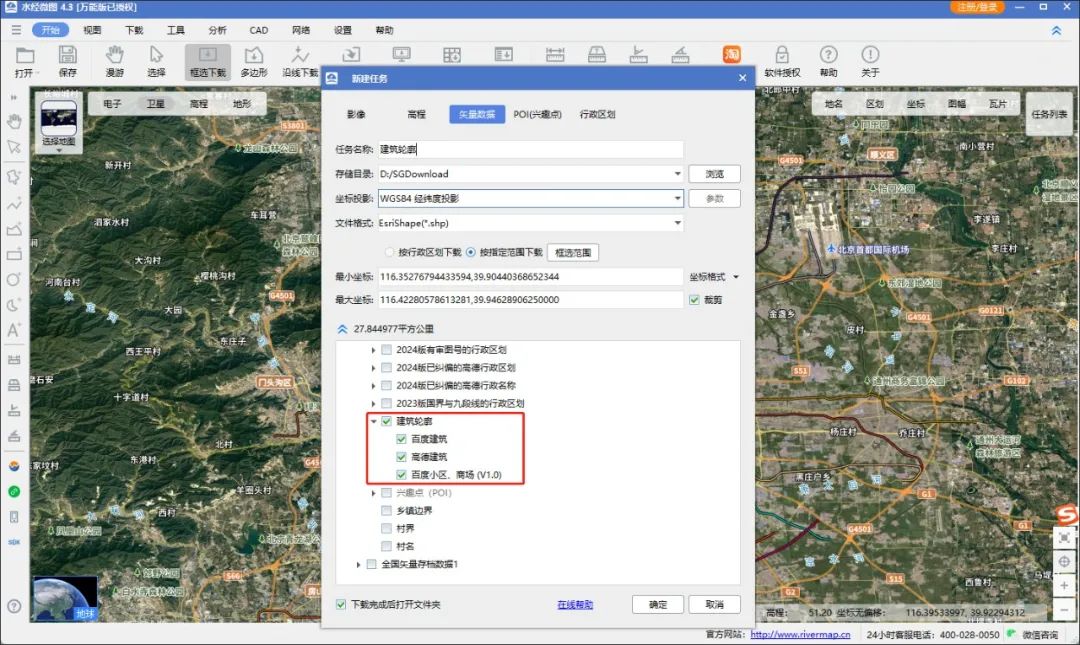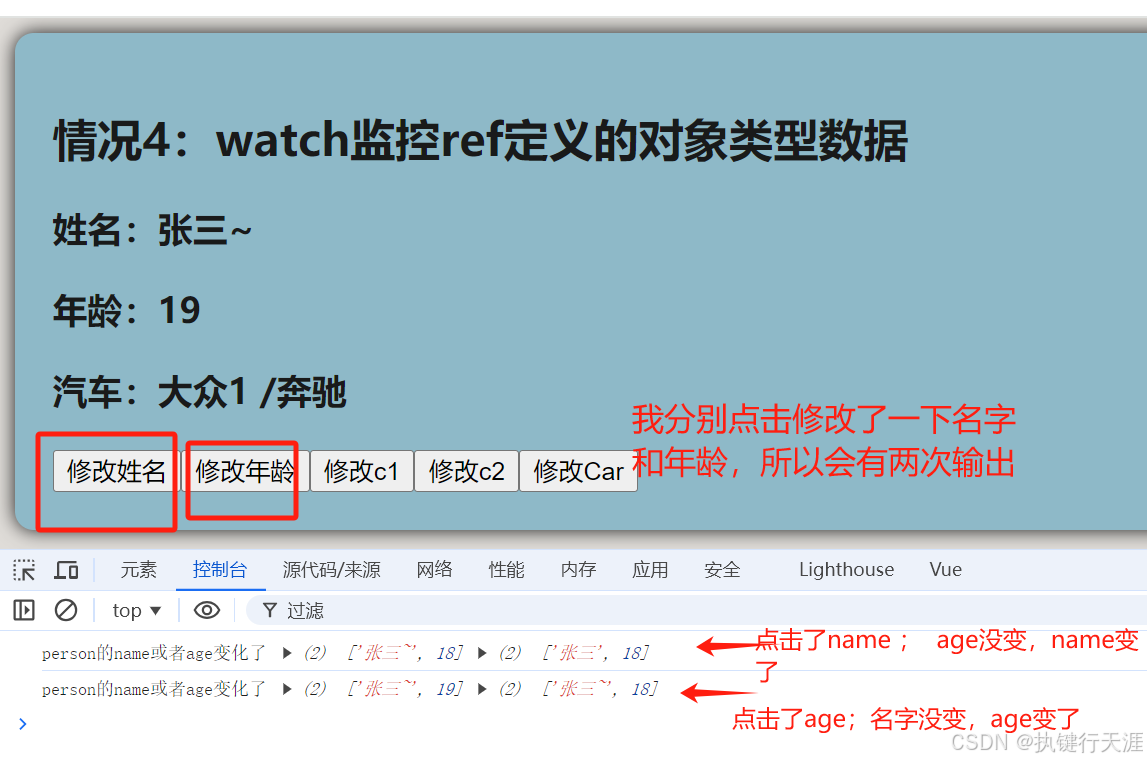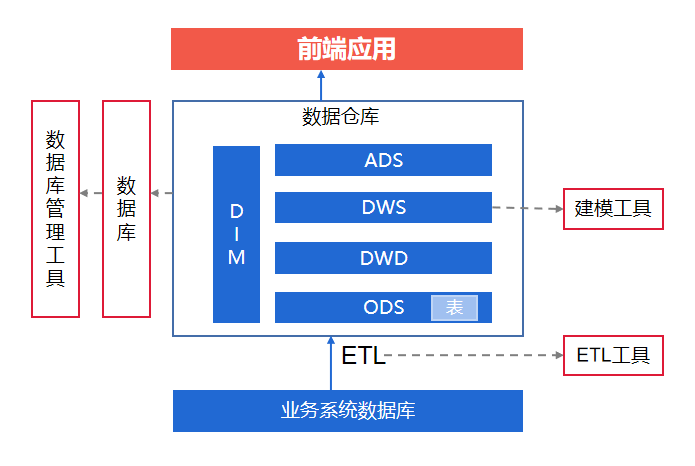本篇文章将介绍一个新的改进机制——空间池化模块StripPooling,并阐述如何将其应用于YOLOv11中,显著提升模型性能。首先,我们将解析StripPooling的工作原理,SP模块通过条带池化在水平和垂直方向上捕捉长距离依赖关系,增强全局和局部特征表达。随后,本文将探讨如何将SP模块与YOLOv11相结合,以提升目标检测的性能。
1. 空间池化模块StripPooling (SP) 结构介绍
本文介绍了一种新的空间池化策略,称为Strip Pooling,用于场景解析。以下是其结构和作用的简要总结:
Strip Pooling Module (SPM):包括两个平行路径,分别进行水平和垂直方向的条带池化,然后通过1D卷积层进行特征调整。然后将他们融合在一起经过1x1的卷积和sigmoid,形成权重。
作用:
1. 捕捉长距离依赖:通过长条形的池化窗口,有效捕捉分布离散的区域之间的关系。
2. 避免不相关信息干扰:窄条形的池化窗口有助于捕捉局部上下文,防止不相关区域干扰。 
2. YOLOv11与SP的结合
YOLOv11作为YOLO系列的最新版本,继承了其前辈的高效性和准确性。然而,传统的YOLO模型在处理长距离依赖和复杂背景时仍存在一定的局限性。为了解决这一问题,我们引入了Strip Pooling (SP) 模块,该模块通过长条形的池化窗口,有效地捕捉全局上下文信息。
1. SP模块集成到YOLOv11的C3K2模块模块中:YOLOv11的C3K2模块模块旨在通过多层卷积和池化操作提取图像中的多尺度特征。我们可以在C3K2模块的某些卷积层后插入SP模块,以优化特征信息的筛选。
2. SP模块集成到YOLOv11的backbone中: 将SP添加到YOLOv11backbone中的SPPF模块之前,增强SPPF模块的全局上下文信息。
3. 空间池化模块StripPooling (SP) 代码部分
import torch
from torch import nn
import torch.nn.functional as F
# from conv import Conv
# from block import C2f, C3k
from .conv import Conv
from .block import C2f, C3, Bottleneck
class StripPooling(nn.Module):
"""
Reference:(20, 12), nn.BatchNorm2d, {'mode': 'bilinear', 'align_corners': True}
"""
def __init__(self, in_channels, pool_size= (20, 12), norm_layer=nn.BatchNorm2d, up_kwargs={'mode': 'bilinear', 'align_corners': True}):
super(StripPooling, self).__init__()
self.pool1 = nn.AdaptiveAvgPool2d(pool_size[0])
self.pool2 = nn.AdaptiveAvgPool2d(pool_size[1])
self.pool3 = nn.AdaptiveAvgPool2d((1, None))
self.pool4 = nn.AdaptiveAvgPool2d((None, 1))
inter_channels = int(in_channels/4)
self.conv1_1 = nn.Sequential(nn.Conv2d(in_channels, inter_channels, 1, bias=False),
norm_layer(inter_channels),
nn.ReLU(True))
self.conv1_2 = nn.Sequential(nn.Conv2d(in_channels, inter_channels, 1, bias=False),
norm_layer(inter_channels),
nn.ReLU(True))
self.conv2_0 = nn.Sequential(nn.Conv2d(inter_channels, inter_channels, 3, 1, 1, bias=False),
norm_layer(inter_channels))
self.conv2_1 = nn.Sequential(nn.Conv2d(inter_channels, inter_channels, 3, 1, 1, bias=False),
norm_layer(inter_channels))
self.conv2_2 = nn.Sequential(nn.Conv2d(inter_channels, inter_channels, 3, 1, 1, bias=False),
norm_layer(inter_channels))
self.conv2_3 = nn.Sequential(nn.Conv2d(inter_channels, inter_channels, (1, 3), 1, (0, 1), bias=False),
norm_layer(inter_channels))
self.conv2_4 = nn.Sequential(nn.Conv2d(inter_channels, inter_channels, (3, 1), 1, (1, 0), bias=False),
norm_layer(inter_channels))
self.conv2_5 = nn.Sequential(nn.Conv2d(inter_channels, inter_channels, 3, 1, 1, bias=False),
norm_layer(inter_channels),
nn.ReLU(True))
self.conv2_6 = nn.Sequential(nn.Conv2d(inter_channels, inter_channels, 3, 1, 1, bias=False),
norm_layer(inter_channels),
nn.ReLU(True))
self.conv3 = nn.Sequential(nn.Conv2d(inter_channels*2, in_channels, 1, bias=False),
norm_layer(in_channels))
# bilinear interpolate options
self._up_kwargs = up_kwargs
def forward(self, x):
_, _, h, w = x.size()
x1 = self.conv1_1(x)
x2 = self.conv1_2(x)
x2_1 = self.conv2_0(x1)
x2_2 = F.interpolate(self.conv2_1(self.pool1(x1)), (h, w), **self._up_kwargs)
x2_3 = F.interpolate(self.conv2_2(self.pool2(x1)), (h, w), **self._up_kwargs)
x2_4 = F.interpolate(self.conv2_3(self.pool3(x2)), (h, w), **self._up_kwargs)
x2_5 = F.interpolate(self.conv2_4(self.pool4(x2)), (h, w), **self._up_kwargs)
x1 = self.conv2_5(F.relu_(x2_1 + x2_2 + x2_3))
x2 = self.conv2_6(F.relu_(x2_5 + x2_4))
out = self.conv3(torch.cat([x1, x2], dim=1))
return F.relu_(x + out)
class Bottleneck_SP(nn.Module):
"""Standard bottleneck."""
def __init__(self, c1, c2, shortcut=True, g=1, k=(3, 3), e=0.5):
"""Initializes a standard bottleneck module with optional shortcut connection and configurable parameters."""
super().__init__()
c_ = int(c2 * e) # hidden channels
self.cv1 = Conv(c1, c_, k[0], 1)
self.cv2 = StripPooling(c_, (20, 12), nn.BatchNorm2d, {'mode': 'bilinear', 'align_corners': True})
self.add = shortcut and c1 == c2
def forward(self, x):
"""Applies the YOLO FPN to input data."""
return x + self.cv2(self.cv1(x)) if self.add else self.cv2(self.cv1(x))
class C3k(C3):
"""C3k is a CSP bottleneck module with customizable kernel sizes for feature extraction in neural networks."""
def __init__(self, c1, c2, n=1, shortcut=True, g=1, e=0.5, k=3):
"""Initializes the C3k module with specified channels, number of layers, and configurations."""
super().__init__(c1, c2, n, shortcut, g, e)
c_ = int(c2 * e) # hidden channels
# self.m = nn.Sequential(*(RepBottleneck(c_, c_, shortcut, g, k=(k, k), e=1.0) for _ in range(n)))
self.m = nn.Sequential(*(Bottleneck_SP(c_, c_, shortcut, g, k=(k, k), e=1.0) for _ in range(n)))
# 在c3k=True时,使用Bottleneck_SP特征融合,为false的时候我们使用普通的Bottleneck提取特征
class C3k2_SP(C2f):
"""Faster Implementation of CSP Bottleneck with 2 convolutions."""
def __init__(self, c1, c2, n=1, c3k=False, e=0.5, g=1, shortcut=True):
"""Initializes the C3k2 module, a faster CSP Bottleneck with 2 convolutions and optional C3k blocks."""
super().__init__(c1, c2, n, shortcut, g, e)
self.m = nn.ModuleList(
C3k(self.c, self.c, 2, shortcut, g) if c3k else Bottleneck(self.c, self.c, shortcut, g) for _ in
range(n)
)
if __name__ =='__main__':
SP = StripPooling(256, (20, 12), nn.BatchNorm2d, {'mode': 'bilinear', 'align_corners': True})
#创建一个输入张量
batch_size = 8
input_tensor=torch.randn(batch_size, 256, 64, 64 )
#运行模型并打印输入和输出的形状
output_tensor =SP(input_tensor)
print("Input shape:",input_tensor.shape)
print("0utput shape:",output_tensor.shape)4. 将空间池化模块StripPooling 引入到YOLOv11中
第一: 将下面的核心代码复制到D:\bilibili\model\YOLO11\ultralytics-main\ultralytics\nn路径下,如下图所示。

第二:在task.py中导入StripPooling 包

第三:在task.py中的模型配置部分下面代码
1. 第一个改进,直接在backbone中添加FRFN
elif m is StripPooling:
args = [ch[f]]

2. 第二个改进,与C3k2模块结合生成C3k2_SP


第四:将模型配置文件复制到YOLOV11.YAMY文件中
# Ultralytics YOLO 🚀, AGPL-3.0 license
# YOLO11 object detection model with P3-P5 outputs. For Usage examples see https://docs.ultralytics.com/tasks/detect
# Parameters
nc: 80 # number of classes
scales: # model compound scaling constants, i.e. 'model=yolo11n.yaml' will call yolo11.yaml with scale 'n'
# [depth, width, max_channels]
n: [0.50, 0.25, 1024] # summary: 319 layers, 2624080 parameters, 2624064 gradients, 6.6 GFLOPs
s: [0.50, 0.50, 1024] # summary: 319 layers, 9458752 parameters, 9458736 gradients, 21.7 GFLOPs
m: [0.50, 1.00, 512] # summary: 409 layers, 20114688 parameters, 20114672 gradients, 68.5 GFLOPs
l: [1.00, 1.00, 512] # summary: 631 layers, 25372160 parameters, 25372144 gradients, 87.6 GFLOPs
x: [1.00, 1.50, 512] # summary: 631 layers, 56966176 parameters, 56966160 gradients, 196.0 GFLOPs
# YOLO11n backbone
backbone:
# [from, repeats, module, args]
- [-1, 1, Conv, [64, 3, 2]] # 0-P1/2
- [-1, 1, Conv, [128, 3, 2]] # 1-P2/4
- [-1, 2, C3k2, [256, False, 0.25]]
- [-1, 1, Conv, [256, 3, 2]] # 3-P3/8
- [-1, 2, C3k2, [512, False, 0.25]]
- [-1, 1, Conv, [512, 3, 2]] # 5-P4/16
- [-1, 2, C3k2, [512, True]]
- [-1, 1, Conv, [1024, 3, 2]] # 7-P5/32
- [-1, 2, C3k2, [1024, True]]
- [-1, 1, SPPF, [1024, 5]] # 9
- [-1, 2, C2PSA, [1024]] # 10
# YOLO11n head
head:
- [-1, 1, nn.Upsample, [None, 2, "nearest"]]
- [[-1, 6], 1, Concat, [1]] # cat backbone P4
- [-1, 2, C3k2, [512, False]] # 13
- [-1, 1, nn.Upsample, [None, 2, "nearest"]]
- [[-1, 4], 1, Concat, [1]] # cat backbone P3
- [-1, 2, C3k2, [256, False]] # 16 (P3/8-small)
- [-1, 2, StripPooling, []] # 16 (P3/8-small)
- [-1, 1, Conv, [256, 3, 2]]
- [[-1, 13], 1, Concat, [1]] # cat head P4
- [-1, 2, C3k2, [512, False]] # 19 (P4/16-medium)
- [-1, 2, StripPooling, []] # 19 (P4/16-medium)
- [-1, 1, Conv, [512, 3, 2]]
- [[-1, 10], 1, Concat, [1]] # cat head P5
- [-1, 2, C3k2, [1024, True]] # 22 (P5/32-large)
- [-1, 2, StripPooling, [] ]# 19 (P4/16-medium)
- [[17, 21, 25], 1, Detect, [nc]] # Detect(P3, P4, P5)
# Ultralytics YOLO 🚀, AGPL-3.0 license
# YOLO11 object detection model with P3-P5 outputs. For Usage examples see https://docs.ultralytics.com/tasks/detect
# Parameters
nc: 80 # number of classes
scales: # model compound scaling constants, i.e. 'model=yolo11n.yaml' will call yolo11.yaml with scale 'n'
# [depth, width, max_channels]
n: [0.50, 0.25, 1024] # summary: 319 layers, 2624080 parameters, 2624064 gradients, 6.6 GFLOPs
s: [0.50, 0.50, 1024] # summary: 319 layers, 9458752 parameters, 9458736 gradients, 21.7 GFLOPs
m: [0.50, 1.00, 512] # summary: 409 layers, 20114688 parameters, 20114672 gradients, 68.5 GFLOPs
l: [1.00, 1.00, 512] # summary: 631 layers, 25372160 parameters, 25372144 gradients, 87.6 GFLOPs
x: [1.00, 1.50, 512] # summary: 631 layers, 56966176 parameters, 56966160 gradients, 196.0 GFLOPs
# YOLO11n backbone
backbone:
# [from, repeats, module, args]
- [-1, 1, Conv, [64, 3, 2]] # 0-P1/2
- [-1, 1, Conv, [128, 3, 2]] # 1-P2/4
- [-1, 2, C3k2_SP, [256, False, 0.25]]
- [-1, 1, Conv, [256, 3, 2]] # 3-P3/8
- [-1, 2, C3k2_SP, [512, False, 0.25]]
- [-1, 1, Conv, [512, 3, 2]] # 5-P4/16
- [-1, 2, C3k2_SP, [512, True]]
- [-1, 1, Conv, [1024, 3, 2]] # 7-P5/32
- [-1, 2, C3k2_SP, [1024, True]]
- [-1, 1, SPPF, [1024, 5]] # 9
- [-1, 2, C2PSA, [1024]] # 10
# YOLO11n head
head:
- [-1, 1, nn.Upsample, [None, 2, "nearest"]]
- [[-1, 6], 1, Concat, [1]] # cat backbone P4
- [-1, 2, C3k2_SP, [512, False]] # 13
- [-1, 1, nn.Upsample, [None, 2, "nearest"]]
- [[-1, 4], 1, Concat, [1]] # cat backbone P3
- [-1, 2, C3k2_SP, [256, False]] # 16 (P3/8-small)
- [-1, 1, Conv, [256, 3, 2]]
- [[-1, 13], 1, Concat, [1]] # cat head P4
- [-1, 2, C3k2_SP, [512, False]] # 19 (P4/16-medium)
- [-1, 1, Conv, [512, 3, 2]]
- [[-1, 10], 1, Concat, [1]] # cat head P5
- [-1, 2, C3k2_SP, [1024, True]] # 22 (P5/32-large)
- [[16, 19, 22], 1, Detect, [nc]] # Detect(P3, P4, P5)
第五:运行成功
from ultralytics.models import NAS, RTDETR, SAM, YOLO, FastSAM, YOLOWorld
if __name__=="__main__":
# 使用自己的YOLOv11.yamy文件搭建模型并加载预训练权重训练模型
model = YOLO(r"D:\bilibili\model\YOLO11\ultralytics-main\ultralytics\cfg\models\11\yolo11_strippooling.yaml")\
.load(r'D:\bilibili\model\YOLO11\ultralytics-main\yolo11n.pt') # build from YAML and transfer weights
results = model.train(data=r'D:\bilibili\model\ultralytics-main\ultralytics\cfg\datasets\VOC_my.yaml',
epochs=100, imgsz=640, batch=8)





















